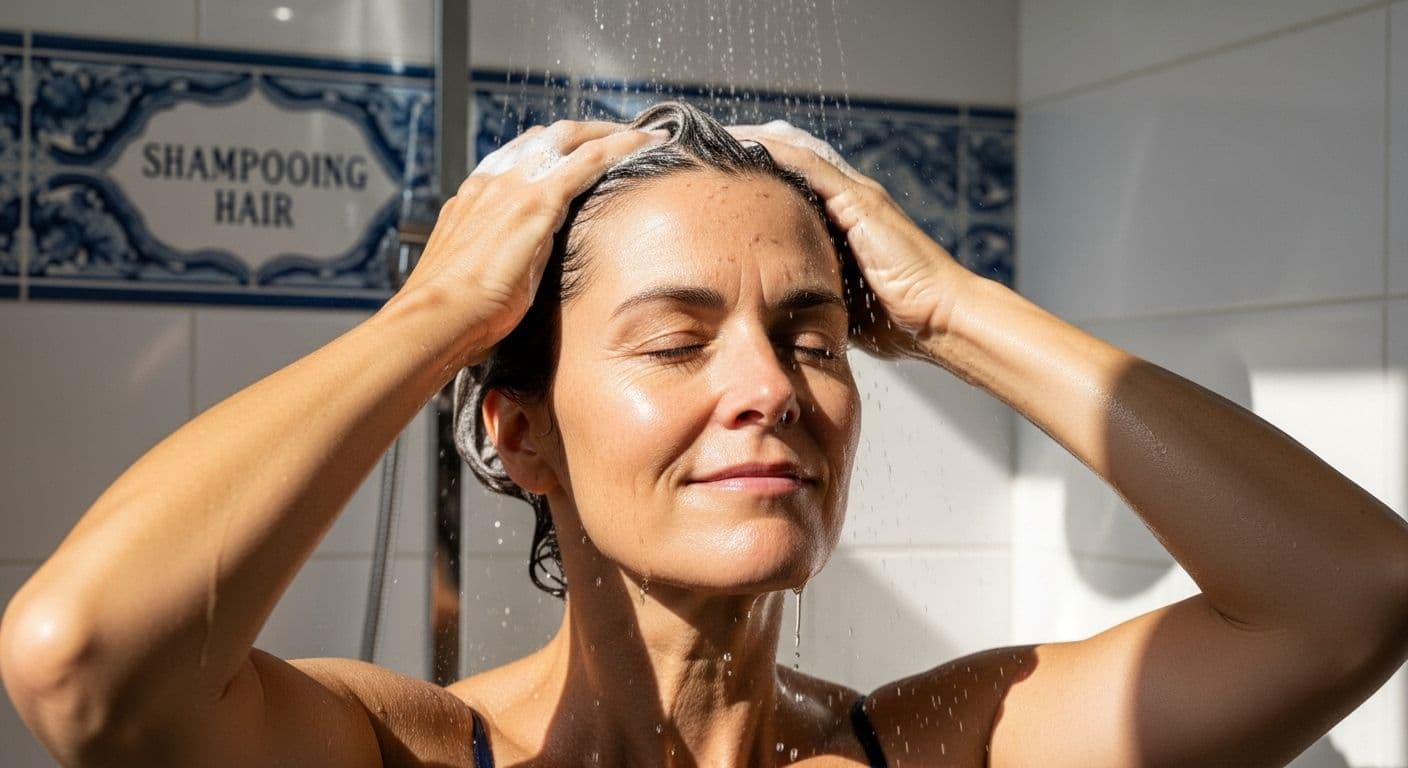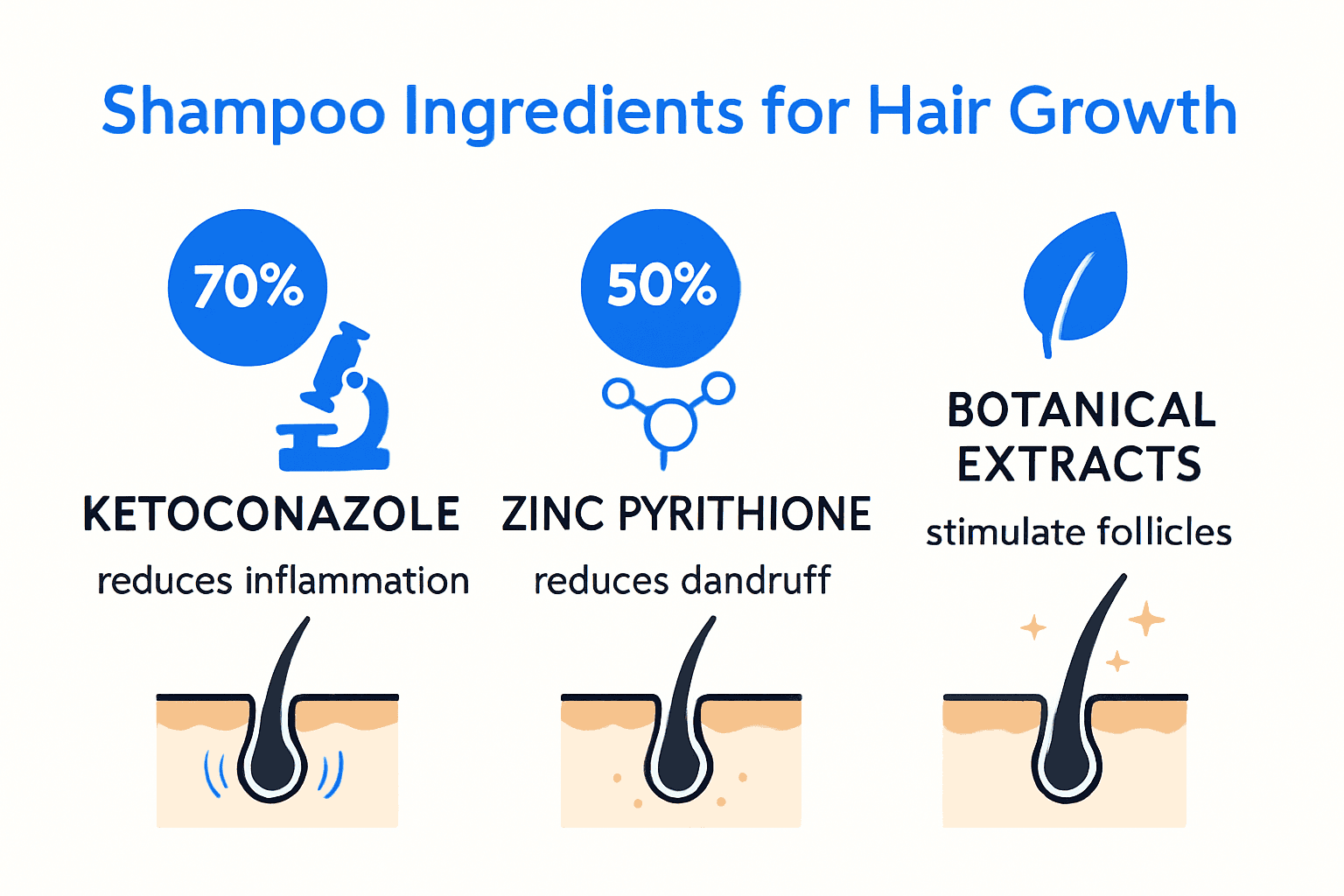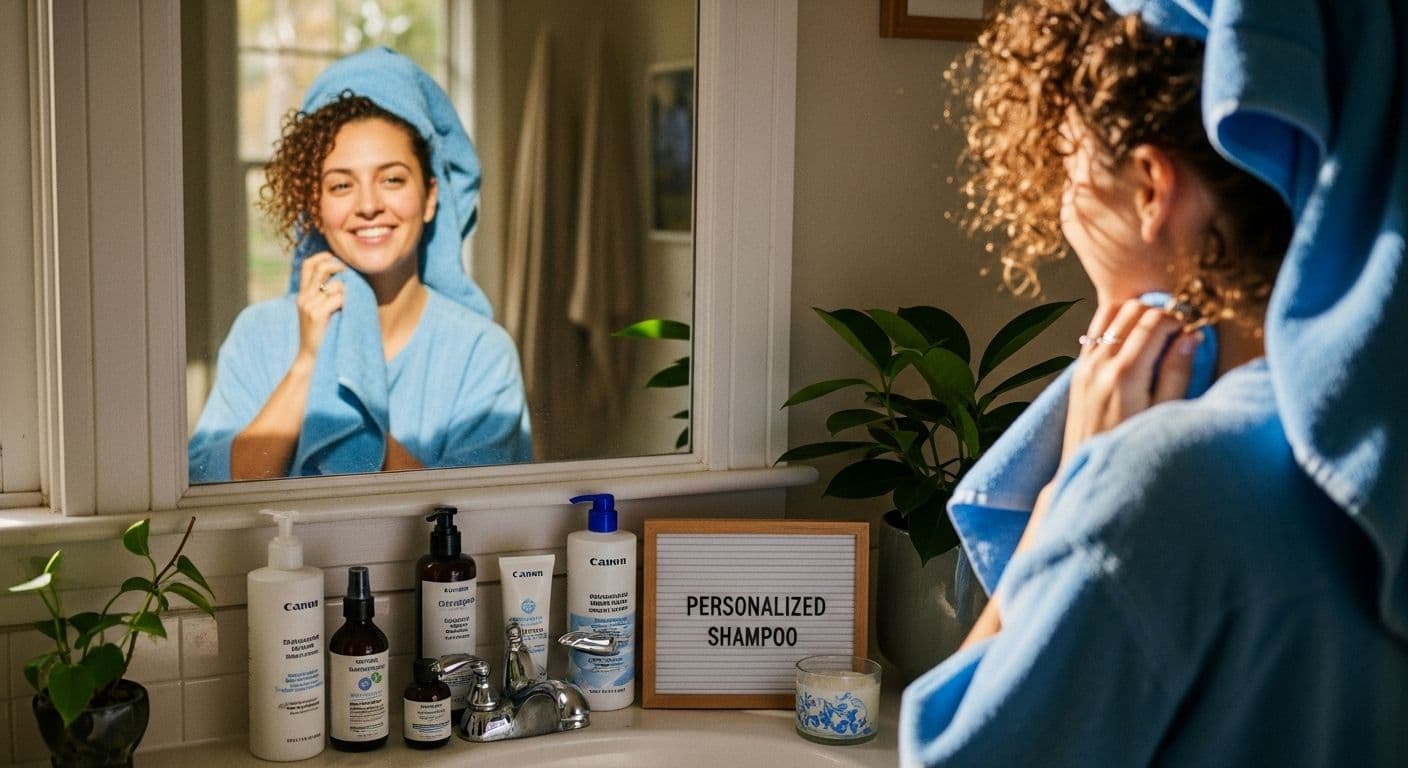Blog
Learning Materials
Shampooing Hair: Boost Growth and Reduce Hair Loss
Updated: August 15, 2025

Shampooing your hair might seem like the most basic part of your routine. Then science steps in and shows the stakes are much higher. New studies reveal that shampoos with 2 percent ketoconazole or specific botanical extracts can actually increase hair count and cut hair loss. Turns out the real secret to healthier, fuller hair could be hiding right there on your shower shelf.
Table of Contents
- Understanding The Basics Of Shampooing Hair
- How Shampooing Hair Impacts Hair Loss And Growth
- Personalized Shampoo Routines For Every Hair Type
- Best Products And Tools For Effective Shampooing
Quick Summary
| Takeaway | Explanation |
|---|---|
| Choose shampoo based on hair type | Different hair types require tailored products to maintain moisture and avoid damage. Understand your hair's needs for effective care. |
| Frequency of washing matters | Optimal washing frequency depends on scalp type: oily scalps may need more frequent cleansing, while dry scalps benefit from less. |
| Use gentle techniques and water temperature | Massage the scalp gently with lukewarm water to stimulate circulation without stripping natural oils essential for healthy hair. |
| Incorporate active ingredients for hair health | Look for shampoos with clinically proven ingredients like ketoconazole and zinc pyrithione to reduce hair loss and promote growth. |
| Personalize your hair care routine | Tailor your washing routine to your specific scalp and hair conditions for better results and healthier hair growth. |
Understanding the Basics of Shampooing Hair
Shampooing hair is more than just a routine cleaning process. It's a critical aspect of maintaining scalp health and promoting optimal hair growth. Learn more about effective hair care techniques that can transform your hair maintenance strategy.
The Science Behind Effective Hair Cleansing
Understanding hair cleansing requires recognizing the complex ecosystem of your scalp. According to the Centers for Disease Control and Prevention, proper hair hygiene involves removing dirt, oil, and unwanted residues while maintaining the natural balance of your scalp. The primary function of shampooing goes beyond simple cleaning. It helps eliminate accumulated environmental pollutants, excess sebum, and potential microbial buildup that can impede healthy hair growth.
Research published in the International Journal of Molecular Sciences reveals that shampoos play a crucial role in removing dust, styling product residues, and excessive scalp oils. However, this process requires a delicate balance. Overwashing can strip the scalp of its natural protective oils, leading to dryness, irritation, and potential hair damage.
Preventing Hair Loss Through Proper Shampooing Techniques
Scientific investigations highlight the intricate relationship between scalp health and hair loss. A study in the Journal of Clinical and Aesthetic Dermatology demonstrates that oxidative stress plays a significant role in premature hair loss. Certain microorganisms, like Malassezia species, can contribute to this stress. By selecting appropriate shampoos and maintaining a consistent cleansing routine, individuals can potentially mitigate these risks.
Key considerations for effective shampooing include:
- Frequency Matters: Determine the ideal washing frequency based on your hair type and scalp condition. Oily scalps may require more frequent washing, while dry scalps benefit from less frequent cleansing.
- Temperature Control: Use lukewarm water to prevent stripping natural oils and causing scalp irritation.
- Gentle Technique: Massage the scalp gently during shampooing to stimulate blood circulation without causing unnecessary stress to hair follicles.
Successful hair care is about understanding your unique scalp ecosystem and developing a personalized approach that supports healthy hair growth while preventing potential damage. Each hair type and scalp condition requires a tailored strategy that goes beyond generic recommendations.
How Shampooing Hair Impacts Hair Loss and Growth
The relationship between shampooing and hair health is complex and nuanced. Regular hair washing plays a crucial role in maintaining scalp conditions that directly influence hair growth and potential loss. Discover personalized solutions for scalp health that can transform your hair care approach.
The Connection Between Scalp Cleansing and Hair Follicle Health
Modern scientific research reveals that proper shampooing goes far beyond simple cleanliness. According to research published in the Journal of Clinical and Aesthetic Dermatology, frequent and regular cleaning with well-formulated shampoos does not damage hair. In fact, mild shampoos can actually support hair health by reducing grooming force and protecting fragile hair strands.
The scalp environment plays a critical role in hair growth. International Journal of Trichology research indicates that scalp conditions like dandruff and seborrheic dermatitis can significantly contribute to hair loss. Specialized shampoos containing antifungal agents such as ketoconazole or zinc pyrithione can help control Malassezia levels and reduce oxidative stress that potentially leads to hair loss.
Optimizing Shampooing Frequency for Hair Growth
Finding the right balance in shampooing frequency is key to maintaining optimal scalp health. A comprehensive study in Skin Appendage Disorders highlights that individual scalp conditions require personalized washing approaches. The research suggests that washing frequency should be tailored to specific hair and scalp characteristics.
Key considerations for promoting hair growth through shampooing include:
- Scalp Microbiome: Maintain a balanced scalp ecosystem by avoiding over-washing, which can disrupt natural protective mechanisms.
- Product Selection: Choose shampoos with ingredients that support scalp health and hair growth, such as biotin, keratin, and natural botanical extracts.
- Circulation Stimulation: Use gentle massage techniques during shampooing to promote blood flow to hair follicles.
Understanding the intricate relationship between shampooing techniques and hair health requires a holistic approach. Each individual's hair and scalp have unique characteristics that demand personalized care strategies. By recognizing the scientific principles behind effective hair washing, you can develop a targeted approach to minimize hair loss and support robust hair growth.
Personalized Shampoo Routines for Every Hair Type
Navigating the world of hair care requires understanding that one size does not fit all. Each hair type demands a unique approach to shampooing that supports its specific characteristics and health needs. Explore your personalized hair care strategy to unlock optimal hair health.
Understanding Hair Type Specific Washing Techniques
Dermatological research reveals the critical importance of tailored hair washing approaches. According to Johns Hopkins dermatologists, shampooing frequency and technique should vary dramatically based on individual hair characteristics. For individuals with dry, damaged, or tightly curled hair, limiting shampoo use to once per week can prevent moisture loss and minimize breakage. Conversely, those with straight hair might benefit from more frequent washing.
The Journal of Cutaneous and Aesthetic Surgery highlights the significance of surfactant selection in shampoo formulations. Different hair types respond uniquely to various cleansing agents:
To help you select the right shampoo and technique based on your hair type, the table below compares recommended washing frequencies, preferred surfactants, and special considerations for different hair types.
| Hair Type | Washing Frequency | Recommended Surfactants | Special Consideration |
|---|---|---|---|
| Oily | More frequent | Anionic | Removes excess sebum effectively |
| Dry or Damaged | Less frequent | Nonionic or Amphoteric | Gentle cleansing to retain moisture |
| African or Textured | Once per week or less | Nonionic | Preserves natural oils, prevents breakage |
| Straight | More frequent possible | Anionic or Amphoteric | Depends on individual scalp oiliness |
- Oily Hair: Anionic surfactants work best for removing excess sebum
- Dry or Damaged Hair: Nonionic or amphoteric surfactants provide gentler cleansing
- African or Textured Hair: Special attention requires nonionic surfactants to maintain moisture
Advanced Cleansing Strategies for Optimal Hair Health
Beyond traditional washing, innovative techniques like 'cowashing' have emerged as valuable alternatives for certain hair types. This method involves using a conditioning cleanser to gently remove buildup while preserving natural hair oils. Particularly beneficial for textured or highly fragile hair, cowashing represents a nuanced approach to maintaining scalp and hair health.
Key considerations for developing a personalized shampoo routine include:
- Scalp Condition: Assess individual scalp characteristics like oiliness, dryness, and sensitivity
- Hair Texture: Recognize the unique needs of straight, wavy, curly, or coily hair types
- Chemical Treatments: Adjust washing frequency and product selection for color-treated or chemically processed hair
Successful hair care transcends generic recommendations. By understanding your hair's unique composition and responding with targeted care, you can create a shampooing routine that promotes growth, reduces breakage, and maintains overall hair health. Experimentation and careful observation will help you discover the perfect balance for your individual hair needs.
Best Products and Tools for Effective Shampooing
Choosing the right products and tools for shampooing is crucial in maintaining healthy hair and promoting growth. Discover advanced hair care techniques that can transform your hair maintenance approach.
Active Ingredients for Hair Growth and Loss Prevention
Clinical research highlights specific ingredients that can significantly impact hair health. According to the Journal of Clinical and Aesthetic Dermatology, shampoos containing zinc pyrithione (ZPT) can effectively reduce hair loss by controlling scalp Malassezia levels, which are associated with oxidative stress and premature hair loss.
Further research in the Journal of Cosmetic Dermatology suggests that 2% ketoconazole shampoo offers promising benefits. Beyond its antifungal properties, ketoconazole may promote hair growth by inhibiting dihydrotestosterone (DHT), a hormone linked to hair loss.
Innovative Natural Extracts in Hair Care
Natural botanical extracts are emerging as powerful tools in hair care. A groundbreaking clinical trial published in the International Journal of Molecular Sciences demonstrated remarkable results. A shampoo containing 0.1% Caesalpinia sappan L. bark and 0.3% Inula helenium L. extract significantly increased hair count in individuals with androgenetic alopecia over a 24-week period.

Key considerations when selecting shampoo products include:
The following table summarizes key active and natural ingredients found in shampoos, their clinical benefits, and the scalp or hair concern they target. Use this as a quick reference when choosing products for hair growth and loss prevention.
| Ingredient | Purpose/Benefit | Targeted Concern |
|---|---|---|
| Ketoconazole (2%) | Inhibits DHT, antifungal, promotes hair growth | Androgenetic alopecia, hair loss |
| Zinc Pyrithione (ZPT) | Controls Malassezia, reduces oxidative stress | Dandruff, scalp health |
| Caesalpinia sappan L. Bark Extract (0.1%) | Increases hair count (as shown in studies) | Androgenetic alopecia |
| Inula helenium L. Extract (0.3%) | Supports increased hair density | Androgenetic alopecia |
| Biotin | Supports scalp health, hair strength | General hair growth/health |
| Keratin | Strengthens hair strands, enhances resilience | Fragile or damaged hair |
- Active Ingredients: Look for scientifically proven components like ketoconazole, zinc pyrithione, and natural botanical extracts
- Scalp Compatibility: Choose products that match your specific scalp condition and hair type
- Supplementary Tools: Invest in gentle scalp massagers and microfiber towels to minimize hair damage
Successful hair care requires a holistic approach. By carefully selecting products with targeted ingredients and using appropriate tools, you can create an effective shampooing routine that supports hair growth and reduces potential loss. Remember that individual results may vary, and consulting with a hair care professional can provide personalized insights tailored to your unique hair characteristics.

Frequently Asked Questions
What ingredients should I look for in a shampoo to boost hair growth?
Look for active ingredients such as 2% ketoconazole, zinc pyrithione, and natural extracts like Caesalpinia sappan L. and Inula helenium, which are shown to promote hair growth and reduce hair loss.
How often should I shampoo my hair for optimal growth?
The ideal shampooing frequency depends on your scalp type. Oily scalps may need more frequent washing, while dry scalps benefit from less frequent cleansing to avoid stripping natural oils.
What shampooing techniques can help prevent hair loss?
Use gentle techniques like massaging the scalp with lukewarm water to stimulate blood circulation without damaging hair follicles. Avoid overwashing to maintain a balanced scalp environment.
Is 'cowashing' a good alternative for all hair types?
Cowashing, or using a conditioner to cleanse hair, can be beneficial for textured or fragile hair types. However, it may not be suitable for all hair types, especially oily hair that requires more frequent washing.
Experience Personalized Hair Growth Solutions with MyHair.ai
Struggling to see results even when you choose the right shampoo and follow healthy hair care routines? If thinning, slow growth, or hair loss feels overwhelming, remember that the journey to stronger hair is different for everyone. After reading about the power of shampooing and scalp care, it is clear that one-size-fits-all solutions are rarely effective. What you need is a personal approach designed around your unique hair needs, scalp health, and growth patterns.

Get a complete hair health analysis instantly with MyHair.ai. Our AI-powered platform assesses your hair using advanced scan technology, identifies early warning signs, and recommends products that match your scalp and hair type. Do not leave your progress to guesswork. Take charge of your hair goals right now by uploading a scan or learning more about tailored hair care strategies directly from the experts. The next step to thicker, healthier hair is just a click away at https://myhair.ai.